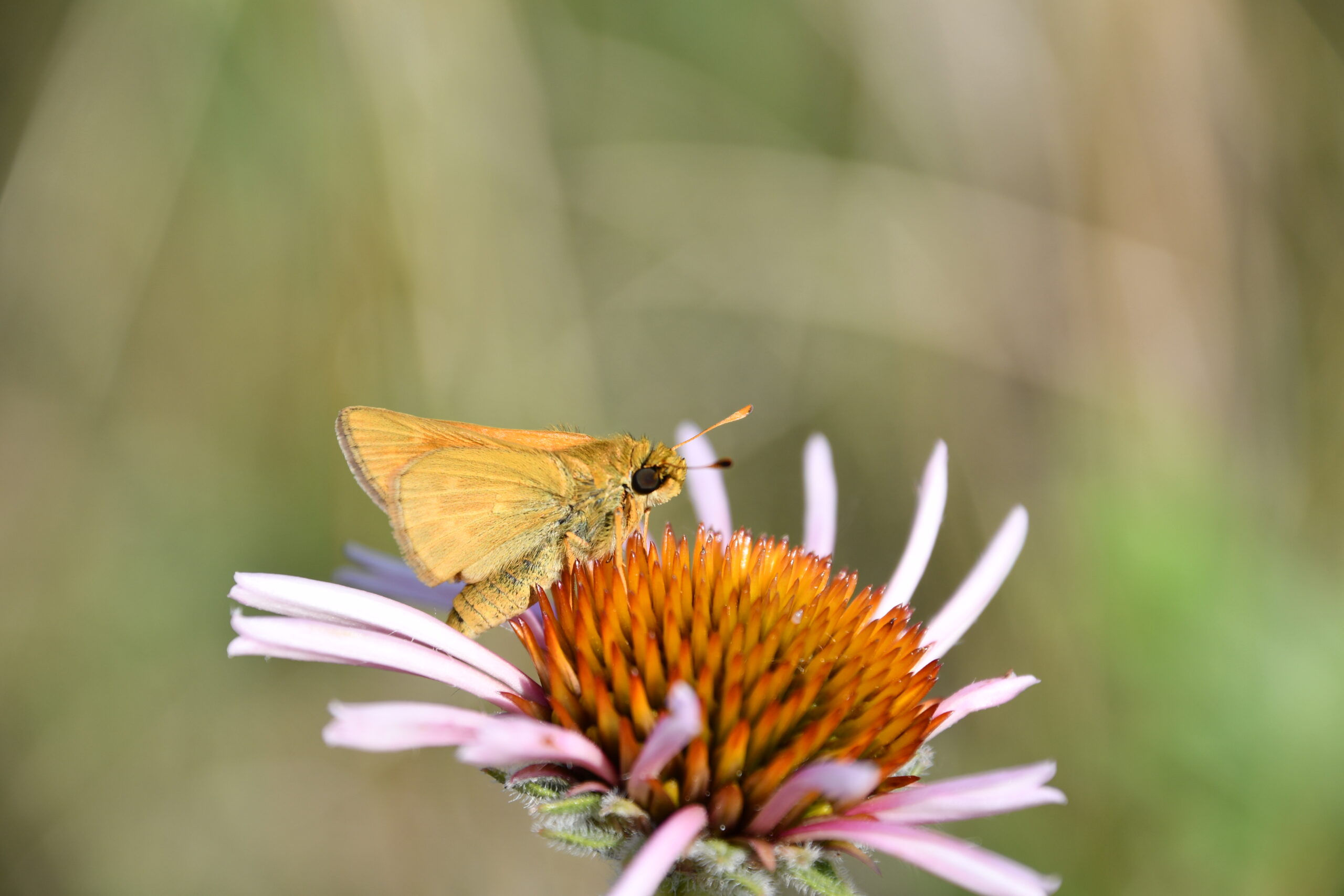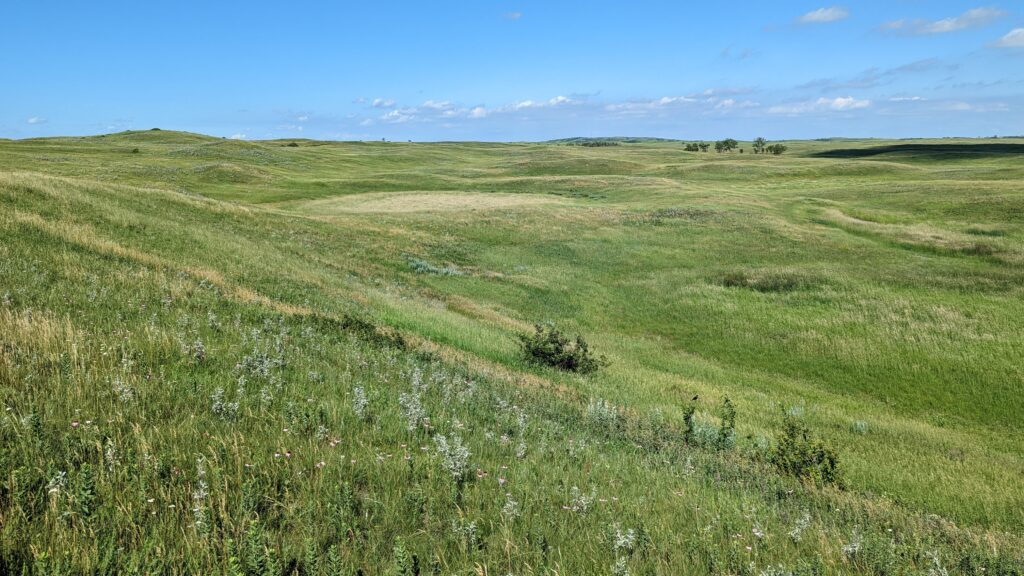While the monarch is iconic for its status as an imperiled butterfly, there are other less-known butterflies on the prairie that deserve just as much recognition for their status as prairie jewels: the prairie skippers. Like all butterflies, skippers have wings made of scales; when the sunlight reflects just right, these scales shine like brilliantly colored gemstones. The elusive skippers are a family of butterflies that are nimble fliers, resembling F-16 fighter jets when at rest. Their name, skipper, refers to their flight patterns, which are fast and unpredictable compared to the lumbering flight of the monarch or the graceful fluttering of other species. Males of some species will dogfight in a cyclonal pattern high into the air to compete over breeding territory, highlighting their aerial agility. These flight patterns make finding them tricky, but the satisfaction is rewarding when they finally reveal themselves.
Skipper photos courtesy of Luke Toso
Like many of our native grassland birds and other pollinators, prairie skippers are indicative of functioning prairie habitat. These butterflies rely specifically on native grasses and forbs (flowers) for their life cycle. The gregarious adults nectar on specific flowers, and are the visible sign of the species’ presence. However, most of their life cycle is spent as caterpillars that construct silk shelters in tree leaves or the leaf blades of grasses. Adults emerge around the same time their host flowers bloom and must reproduce during a short window to sustain the population. If any of these elements are missing, the population may disappear. The presence of these bugs on the prairie indicates that the ecological needs of the species are present, and the system is functioning naturally.
With the ongoing loss of native grassland throughout the PPJV, some of these endemic prairie skippers, such as the Dakota skipper (Hesperia dacotae), have been protected under the Endangered Species Act due to population declines. Because they are difficult to detect and have a short flight period, research is ongoing to help scientists and conservation planners alike understand this species’ ecology. This is highlighted by recent work to use environmental factors to model suitable habitat. The collective efforts of private ranchers, energy developers, federal regulators, and NGOs have resulted in an unlikely partnership that has come together to protect the grassland this species relies on, which in turn directly helps other grassland species. The ongoing public and private efforts show that these small butterflies can make a big impact on grassland conservation.


